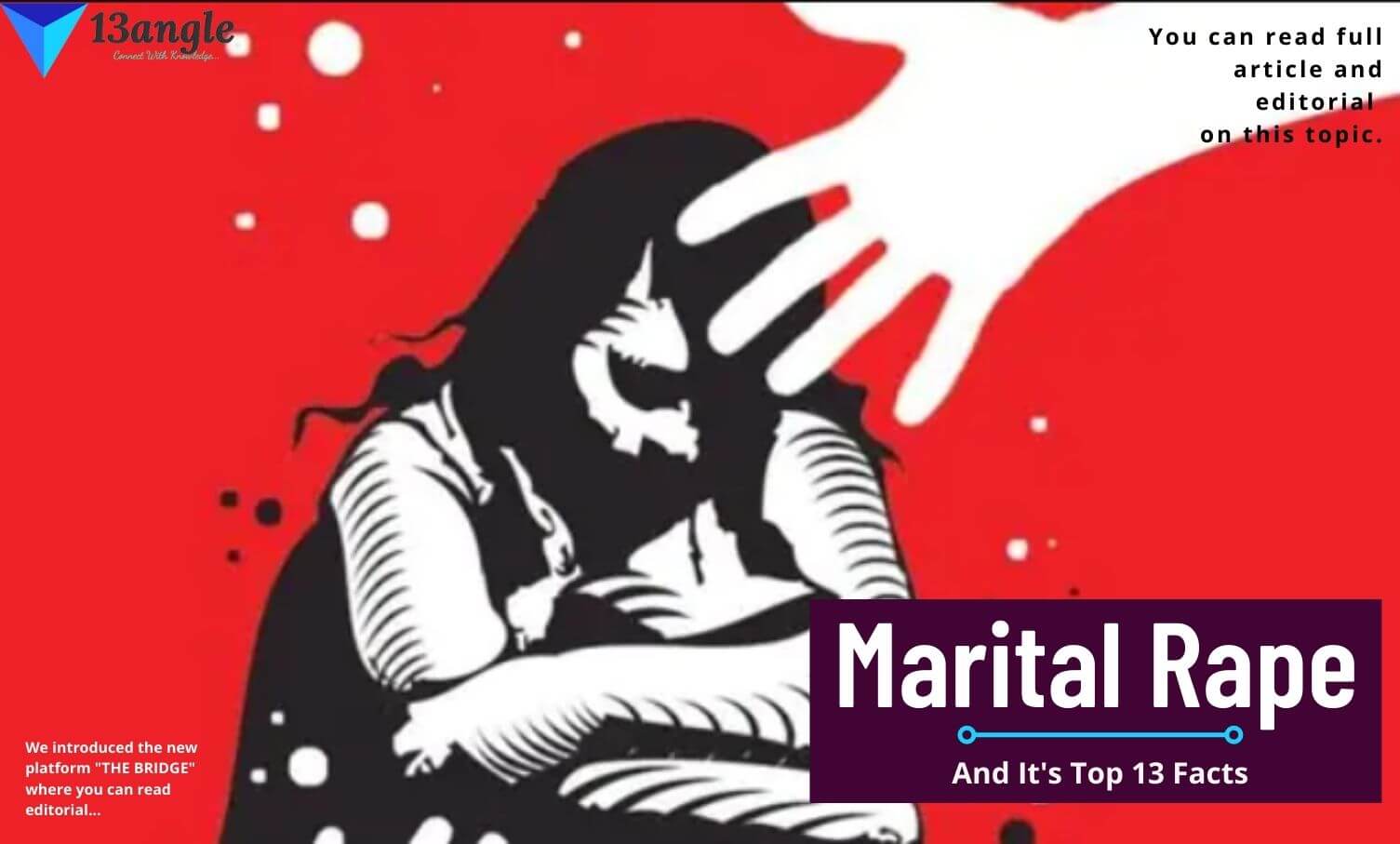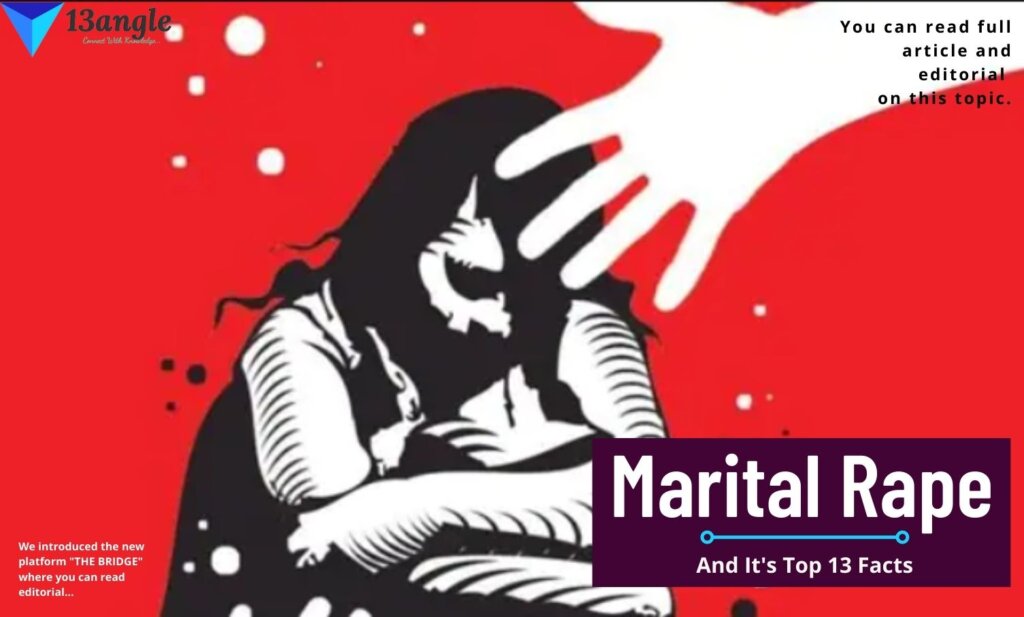- Umang Sagar
- National Issue, Recent article, Social Issue
Marital Rape

Introduction
Marital rape is a form of domestic violence and sexual abuse in which a husband engages in sexual activity with his wife without her permission. Although ancient laws did not consider it a crime, many international governments now recognize the woman’s right to consent. Even though there is no physical violence in marital rape, the permission of the woman is the most critical factor. According to historical rules, if a husband sexually attacks his wife, he is within his rights because the wife has handed up to her autonomy to her spouse through marriage. Modern cultures, on the other hand, have spoken out against domestic abuse and have raised their voices. Many countries have begun to alter their laws regarding marital rape since the twentieth century. Domestic violence has always been a problem in Indian society. Domestic violence legislation has been a source of contention in India. Although the government has always claimed to make women safer in our society, the implementation of laws relating to women’s rights and domestic violence in society demonstrates a different viewpoint. The laws have been enacted, however, they have not been executed to their full potential. According to statistics, women do not feel safe at home. According to statistics, 70% of women endure domestic violence from their husbands and in-laws. Marital rape or sexual assault is one of the crimes that fall under the category of domestic violence.
Approximately 99 percent of incidences of sexual abuse against women by their spouses go unreported. This is a concerning figure. One of the most horrific crimes is sexual violence, sometimes known as marital rape. When a woman’s faith in her husband is betrayed, she is nasty to her children. The government has passed several laws dealing with domestic and sexual violence, yet they are ineffectual. What’s interesting is that in India, marital rape is still legal. There are 196 countries in the world. Only 36 of them, including India, have created an exception by legalizing marital rape. The legalizing of marital rape jeopardizes a woman’s dignity and human rights in a culture and country. India is a country that has long worshipped female deities and, according to reports, is one of the places where women are not secure. Rape is defined as all forms of sexual assault, including non-consensual forms of intercourse, according to Section 375 of the Indian Penal Code. However, under exception 2 of section 375, marital sex is not a crime. After entering into marital intercourse, a wife is presumed to give her husband eternal agreement to have sex with her. In India, marriage between a man and a woman signifies that both parties have agreed to engage in sexual activity.
Definition Of Rape

In most jurisdictions, rape is defined as sexual intercourse or other forms of sexual penetration carried out without the victim’s permission by a perpetrator. Governmental health agencies, police enforcement, health practitioners, and legal professions all have different definitions of rape. It has changed over time and across cultures. Rape originally had no sexual connotation and is still used in English in other circumstances. It was categorized as a kind of crime or “attack crime” in Roman law. Raptus was referring to the kidnapping of a woman against the will of the male who ruled over her, and sexual intercourse was not a requirement. Rape has been defined in a variety of ways over the years. Until 2012, the Federal Bureau of Investigation (FBI) believed rape to be a male-on-female crime.
They updated its definition in 2012 from “Forcible and against her will carnal knowledge of a female” to “Any penetration, no matter how minor, of the vagina or anus with any body part or object, or oral penetration by a sex organ of another person, without the victim’s consent.” The prior definition, which had not changed since 1927, was deemed antiquated and restrictive. The new definition recognizes any gender of victim and perpetrator, as well as the fact that rape with an object can be just as painful as the rape of the penile/vaginal area. The bureau goes on to explain what happens when a victim is unable to consent due to mental or physical impairment. It accepts that drugs and alcohol might render a victim incapable of giving genuine consent.
The term does not change federal or state criminal legislation, nor does it affect the federal, state, or municipal charging and prosecution; rather, it ensures that rape is reported more correctly across the country. Rape has also been defined in ways that go beyond typical definitions by health groups and authorities. Rape is classified as a kind of sexual assault by the World Health Organization (WHO), whereas rape is classified as a form of sexual violence by the Centers for Disease Control and Prevention (CDC). Other acts of coercive, non-consensual sexual activity that may or may not include rape, according to the CDC, include drug-facilitated sexual assault, acts in which a victim is forced to penetrate a perpetrator or someone else, intoxication where the victim is unable to consent (due to incapacitation or unconsciousness), non-physically forced penetration that occurs after a person is pressured verbally (by intimidation or misuse of authority to force to consent), or complete penetration (including using a weapon or threatening to use a weapon). The Veterans Health Administration (VHA) has established universal screening for “military sexual trauma” (MST) and offers free medical and mental health services to enrolled veterans who report MST (Title 38 United States Code 1720D; Public Law 108-422).
Some countries or jurisdictions distinguish between rape and sexual assault by defining rape as penile penetration of the vagina or exclusively penetration of the penis, whereas sexual assault refers to other sorts of non-consensual sexual behavior. Scotland, for example, places a premium on penile penetration, requiring that the sexual assault be conducted with the use of a penis to be considered rape. Rape is defined by the International Criminal Tribunal for Rwanda as “a physical invasion of a sexual character performed on a person under forceful conditions.” In some circumstances, the term rape has been replaced with terminologies like sexual assault or criminal sexual conduct in legal documents.
Traditional Milieus

The decision of the Chhattisgarh High Court, which dismissed rape charges under Section 375 of the Indian Penal Code, 1860 (IPC) but upheld charges under Section 377 of the IPC for unnatural offences, such as “carnal intercourse against the order of nature,” made headlines almost immediately, as it should have. Apart from being sensational news, the matter has not been addressed or acknowledged as a source of worry by the appropriate person in the appropriate location. The allegations against the accused were observed/recorded by Justice N.K. Chandravanshi on August 23, 2021, and included harassment by dowry demand, unnatural (anal/oral) physical relation by inserting radish, finger, and forced intercourse. The penalties for ‘Unnatural offences’ under Section 377 and ‘Rape’ under Section 365 may be comparable, namely, life imprisonment or a 10-year sentence plus a fine. So, why is there such a ruckus over the decision? The issue is India’s continued use of the ancient law of exception for marital rape. Though this exception had been abolished in a number of other countries, notably the United Kingdom, India adopted our law.
The refusal to contemplate, let alone eliminate, the ‘marital exemption’ rule demonstrates the evolution of Indian society in terms of gender inequity, as well as the political/legislative will to reform laws to bring about the improvements that the country needs. The decision of the Chhattisgarh High Court, which dismissed rape charges under Section 375 of the Indian Penal Code, 1860 (IPC) but upheld charges under Section 377 of the IPC for unnatural offences, such as “carnal intercourse against the order of nature,” made headlines almost immediately, as it should have. Apart from being sensational news, the matter has not been addressed or acknowledged as a source of worry by the appropriate person in the appropriate location. The allegations against the accused were observed/recorded by Justice N.K. Chandravanshi on August 23, 2021, and included harassment by dowry demand, unnatural (anal/oral) physical relation by inserting radish, finger, and forced intercourse.
The penalties for ‘Unnatural offences’ under Section 377 and ‘Rape’ under Section 365 may be comparable, namely, life imprisonment or a 10-year sentence plus a fine. So, why is there such a ruckus over the decision? The issue is India’s continued use of the ancient law of exception for marital rape. Though this exception had been abolished in a number of other countries, notably the United Kingdom, India adopted our law. The refusal to contemplate, let alone eliminate, the ‘marital exemption’ rule demonstrates the evolution of Indian society in terms of gender inequity, as well as the political/legislative will to reform laws to bring about the improvements that the country needs. The judges are a reflection of the law, and the law, in turn, is a reflection of society. If it comes down to it, we must admit that we have failed as a society by failing to implement the vision that the founding fathers had for India. Despite the fact that India’s Preamble demands ensuring ‘Equality’ and ‘Fraternity’ to everyone, and the Constitution of India guarantees a person’s right to life, equality, and security, the Indian Penal Code, the country’s governing criminal laws, ignores the principles of this concept.
The proclivity to decriminalize forced sex (rape) committed by a man under the pretence of a basic right coming out of marriage, rather than women’s basic human rights to voluntarily consent to intercourse during unendurable circumstances, is awful. This can be attributed to the inequity inherited by the downtrodden, particularly women, as a result of the long
reign of a sexist, patriarchal, authoritative, and conservative cultural mould and, as a result, politics. The parliamentarians’ failure to punish marital rape demonstrates a failure to respect the gender equality inherent in India’s Preamble and Constitution, which guarantees all citizens the right to equality and dignified life. Failure to exercise power is just as bad as abusing power by legislators and conscious keepers, or as Dante Alighieri put it, “The hottest realms in hell are prepared for those who, in times of great moral crisis, preserve their neutrality.”
Although rape has been acknowledged as a horrible crime against human dignity and society, and one in which a man is treated like an animal, the Indian Penal Code makes an exception for it. Rape is a crime against humanity, according to the International Court of Justice “Rape is a kind of violence. “Rape and sexual violence comprise one of the worst methods of injuring the victim because he or she suffers both bodily and mental suffering,” and “Rape and sexual violence constitute one of the worst ways of harming the victim because he or she suffers both bodily and mental harm.”
Woman’s Position In An Egalitarian Society
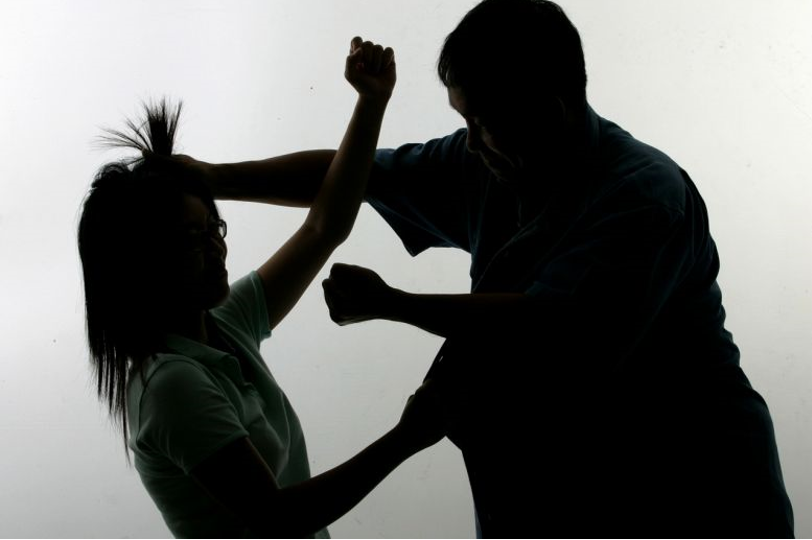
The club-wielding “caveman” of the New Yorker cartoon that drags his girlfriend off by the hair of her head epitomizes popular depictions of women and men in primitive civilization. The writings of Robert Ardrey, Desmond Morris, and others, on a higher, apparently scientific level, promote this idea.
1. The message stays essentially the same behind the amusement at the cartoon, or whatever picture is being fashioned from bits and pieces of ethnographic material plucked out of context: people have always been aggressive and competitive, and men have always been “dominant.”The theme repeats, with variations, that our “primitive” or “animal nature” reflects the “law of the jungle,” in which “might make right,” because a fundamentally brutish human nature lies beneath the superficial gloss of “civilization,” with its Golden Rule of “do unto others as you would have them do unto you,” and the value our culture claims to place on human life and individuality. When we consider the facts from social and physical anthropology, archaeology, and primatology as a whole, rather than picking and choosing, a distinct tale emerges. Sociality, curiosity, and playfulness, rather than assertive competitiveness and aggression, allowed a little and vulnerable species to evolve into the human being who produced many various ways of living all over the world. Our primate cousins are characterized by sociality, or a strong desire to be around other members of the same species and a strong interest in them. Fighting and scrapping are secondary motives, not primary ones. According to Thomas Hobbes, humanity did not evolve from an essentially hostile forefather. It is obvious now that it could not have done so. Group life, which needed and enabled cooperative patterns, was the foundation for human evolution’s success. Cooperation, in turn, led to and grew reliant on the development of more refined tools and utensils, as well as the elaboration of language.
Much has been written about how our primate forefathers used meat hunting as a supplement to foraging for vegetable diets. The slaughter of animals at an early period in human history is said to have resulted in profoundly ingrained violent urges. The argument has proven appealing, particularly because it may be used to justify the dominant ambitions of ambitious politicians and the powerful financiers who support them by blaming their behavior on human nature. People forget that, among animals, murdering other species does not result in the death of one’s own species, but that killing one’s own species is uniquely human. What relevance does killing animals have for individuals who rely on hunting for their livelihood?
Until recently, a few people living beyond the reach of industrialization relied mostly on harvesting wild vegetable foods and hunting to survive. Hunting abilities were valued highly, but hostility, as we know it in contemporary society, was downplayed. Hunting was unusually taxing – it was both an exhilarating task and a drudgery. The feelings for the animals slaughtered, particularly large animals did not reflect our egoistic satisfaction in victory, but rather thankfulness and respect. Animal gods were revered, and legends depicted close interactions between people and animals, including intermarrying, giving birth to one another, teaching one another, and entering into compacts that sealed their relationships. These people worked together to gather meat and shared the animals they obtained. The social systems of foraging peoples were similar from the Bushman gatherers and hunters of the Kalahari Desert in southwest Africa to the Eskimo sea mammal hunters of the Arctic. Collaborative societies were those that relied on gathering and hunting (and fishing). People shared meals and discussed greed and selfishness in the same way that we might discuss mental illness or criminal activity. People created and treasured excellent belongings, yet they were just as happy to give them away as they were to keep them. People did not follow a single leader but instead took part in decision-making – norms emphasized the need of reducing animosities and regulating jealousy and fury. Personal animosity was often ritualized, as in the Eskimo drum duel, in which two opponents flung insults back and forth in song. People chastised one another through banter and joking, which frequently resulted in outbreaks of laughter, sometimes including the person who was chastised. When serious fights resulted in one person injuring or killing another, atonement was sought rather than punishment. Warfare was uncommon or unheard of. It took the form of short-lived raids rather than organized conflict over lands, slaves, or tributes when it happened. The sweet and happy monkey-hunting Tasaday of the Philippines, and the nasty and grimly competitive Ik of Kenya, have both lately been filmed and written about.
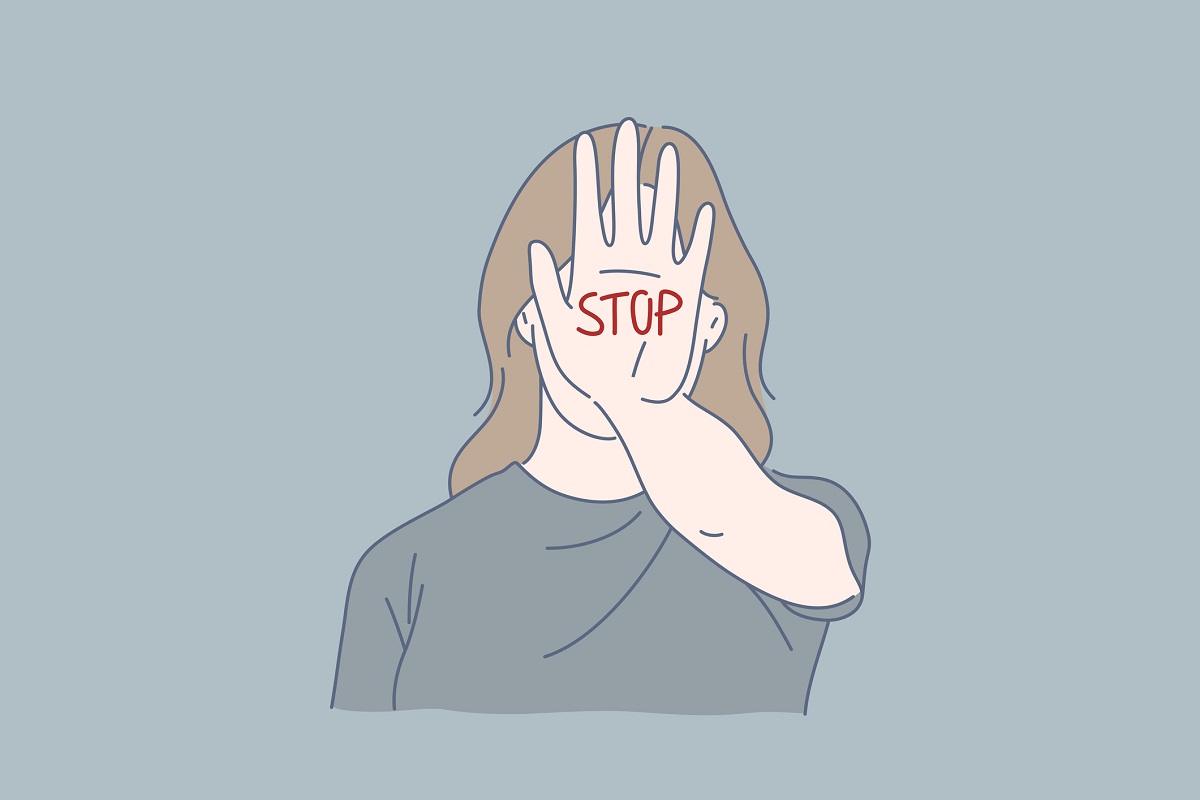
2. The Tasaday, who had been living their own free lives until lately, is a better representation of our gathering and hunting forefathers because Ik has been driven from their hunting territories and appears to be on the verge of collective suicide.
Private property, social stratification, political oppression, and institutionalized warfare with standing armies are all examples of social inventions that have evolved over time. They don’t automatically display some aspect of human nature. The sweet and happy monkey-hunting Tasaday of the Philippines, and the nasty and grimly competitive Ik of Kenya, have both lately been filmed and written about.

3. The Tasaday, who had been living their own free lives until lately, is a better representation of our gathering and hunting forefathers because the Ik have been driven from their hunting territories and appear to be on the verge of collective suicide. Private property, social stratification, political oppression, and institutionalized warfare with standing armies are all examples of social inventions that have evolved over time. They don’t automatically display some aspect of human nature. Otherwise, the vast majority of us today would not be working so hard to find a minimum happy, secure, and friendly way of life, but instead would revel in the competitiveness, hostility, and violence that our social structure allows and encourages. The typical institutionalized inequities, dominance hierarchies, and persistent concern with large-scale conflict initially evolved in the fourth millennium BC (BCE) during the so-called urban revolution. Various egalitarian gathering and hunting cultures, and later horticulture societies, elaborated ritually on various types of social and ceremonial rank over the course of human history, but retained, as far as can be established, the equal right of all to basic sources of livelihood. Then, as a result of human intelligence and innovation, work specialization evolved and a portion of the population was removed from basic food production. Traders became merchant intermediates when barter evolved into commerce. Priest-chiefs progressively used the goods in their possession for redistribution, and what had been a ritual status became exploitative aristocracy. Free grounds were converted into privately managed terraced, irrigated, fertilized, or otherwise worked fields, limiting equal access to land. In short, class structures emerged, albeit slowly and with resistance and attempts to maintain cooperative values. Mesopotamia, Egypt, Jerusalem, and Persia were the first to develop fully stratified societies in southwest Asia and northeast Africa. Urban, stratified societies arose independently in the Western hemisphere among the Incas, Mayas, and Aztecs’ forerunners. As early history reconstructions in Africa, Asia, Europe, and the New World show, mercantile urban centers with stratified, competitive social and political systems emerged frequently from societies organized around egalitarian clans in later millennia. The next social change, the Industrial Revolution, began over 5000 years after cities were established in Asia and Africa. The Industrial Revolution was inextricably linked to European colonial and imperial growth, bringing the relative sovereignty of the world’s diverse cultural traditions to an end. People from all continents gradually became entangled in a single global system of military, political, and economic exploitation. In detailed ethnohistorical reconstructions of the diverse lifeways produced by different peoples, a recurring pattern emerges. Systematized cooperativeness has been continually undercut by systematized competitiveness, according to archaeological data, early explorers’, missionaries’, and traders’ narratives, as well as subsequent ethnographic information. Fortunately, a growing number of people around the world are attempting to develop new forms of cooperation. It is critical that we succeed, otherwise, our planet will become unfit for life.
Whether A Penalty Should Be Inflicted On The Occurrence Of Marital Rape
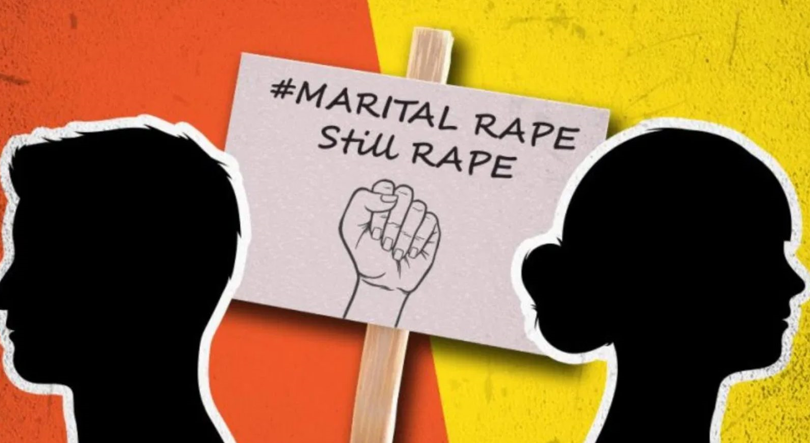
If socially sanctioned sexual enslavement is included in one’s definition of marriage, then one does not comprehend either marriage or consent. Giving permission for something to happen is what consent is all about.
Women in marriage are encouraged to submit to sex, whether they want it or not at the time, since who cares if she wants it or not when she is married to her husband? Because a husband does not possess a woman’s body, a marriage is a social contract, not a blanket authorization for sex. A woman has total discretion over whether she agrees to her husband’s request for sexual intercourse or whether she wants to engage in it herself. If a husband does not stop instead of saying no, it is rape because she did not consent. She declined. That’s all there is to it. The government focuses on a spouse’s right to control the sexuality of the other spouse, which stymies the entire consent discussion. It conflates sexual assault with honor, diverting attention away from the fact that it is a violent violation of consent. In response to a Public Interest Litigation filed by an NGO named Men Welfare Trust, Acting Chief Justice Gita Mittal and C Hari Shankar of the Delhi High Court remarked, “Marriage does not mean that the woman is always ready, willing, and consenting [for sex].” The man will have to show that she gave her consent.” Articles 14 and 21 of the Constitution are violated by Exception 2 to Section 375 of the IPC. It is past time for Indian law to recognize the brutal nature of this provision and strike it down. It’s extremely unfortunate that we’re still debating whether a married woman has control over her own body. The majority of developed and developing countries have made marital rape illegal. While critics will continue to defend and claim the institution of marriage’s sacredness, it is past time for India to replace an outdated vision of conjugal relationships with one based on mutual respect and consent.
Anticipated Repercussions Of Penalization

Section 375 of the Indian Penal Code (“IPC”) defines and codifies rape, which encompasses all forms of sexual abuse, including non-consensual intercourse with a woman. However, section 375 contains an exception that states that non-consensual intercourse with a wife over the age of 15 does not constitute rape. The Supreme Court of India later increased the age of consent for sexual intercourse in marriage to 18 years in Independent Thought v. Union of India. Prior to the verdict, a husband’s sexual conduct against his wife over the age of 15 was not considered a crime. In addition, the court requested legal reforms to prevent and rectify infringement of women’s rights resulting from child marriage. The court, on the other hand, declined to deal with a lady above the age of 18 who had been raped in her marriage.
In today’s Indian society, a woman is believed to consent to sex after entering into a marital relationship. If women’s rights be taken away after marriage, marriage itself would be a violation of the fundamental rights provided by India’s Constitution, Articles 14 and 21. The Supreme Court concluded in State of West Bengal v/s Anwar Ali Sarkar Habib that any classification is subject to reasonable analysis under Article 14 of the Indian Constitution, which may only be passed if it draws a rational relationship for the aim that the act tries to achieve. Exempting a husband from punishment goes completely against the spirit of the law. In summary, whether a woman is married or not, the repercussions of rape are the same. It should be mentioned that there are exceptions to the rule, but there are no hard and fast rules when it comes to marital rape.
Analytical Statistics
- According to a survey by the National Crime Record Bureau, an instance of crime against women was reported every two minutes in 2015, with the majority of the crimes being committed by their husbands. Following this, two-thirds of married women in India between the ages of 15 and 50 were exposed to forced sex, physical assault, torture, and dowry demand, according to a UN Population Fund research. In 1932, Poland became the first country to prohibit marital rape, followed by Australia as the first common law country to do so. Many other countries have made marital rape illegal since the 1980s. Canada, the United States, Malaysia, and South Africa are among these nations. Thailand made it illegal in 2007, followed by South Korea and Rwanda in 2009. The criminalization of marital rape today shows that it is a human rights violation. In India, rape in the context of marriage is still not recognized a human rights violation.
Inadequacies In The Gender Based Legislation
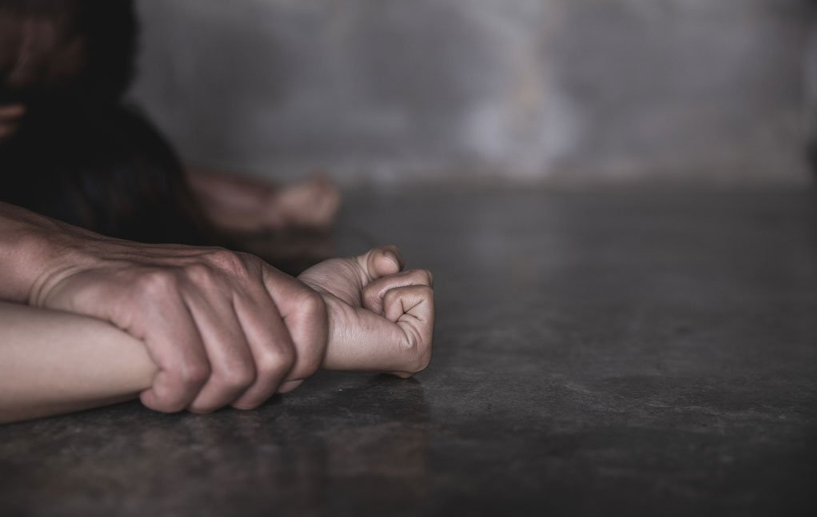
- Three minor Dalit girls were discovered unconscious on their family farm in Uttar Pradesh’s Unnao district on February 17. By the time they were carried to the local hospital, two of them had perished, while the third girl had escaped the trauma. The girls were found tied up in the fields, according to the family; a forensic report revealed evidence of poisoning, and the police said that the crime was committed as retaliation for the accused’s inappropriate approaches toward one of the girls being rejected. As with the Hathras rape episode and the Unnao rape incident before it, some activists and journalists highlighted the girls’ Dalit identity as key to understanding the nature of the crime. The state reacted strongly to this story of caste-based violence. On the surface, the February 17th incident appeared to be a case of pure retribution. However, the shame of rejection resulting from caste differences can not be ruled out as a contributing factor in this crime. Law has attempted to legislate against the patriarchal and caste structures that have persisted for thousands of years as a means of administration. The law and its apparatus, on the other hand, do not exist in a vacuum. The law is brought to life by the human hand that upholds and administers it. If patriarchy and caste continue to dominate and condition the human hand, it will be difficult for the law to be successfully applied in both letter and spirit. How can a law like this possibly be just and equitable? The upper caste heterosexual men are over-represented in positions of power and authority in all of these systems, from police officials who investigate caste and gender crimes to state governments who approve such investigations and the judiciary accountable for adjudication. Men in positions of authority work with deeply entrenched prejudices that tend to sustain the status quo of their privilege and supremacy as direct benefactors of a patriarchal, casteist polity. Rather than labeling crimes like the Unnao incident as caste violence, legal authorities hunt for alternate explanations that ignore the interplay of gender, sexuality, and caste. As a result, violence against marginalized genders and castes is exacerbated not just by societal crimes, but also by the legal system’s inaction.
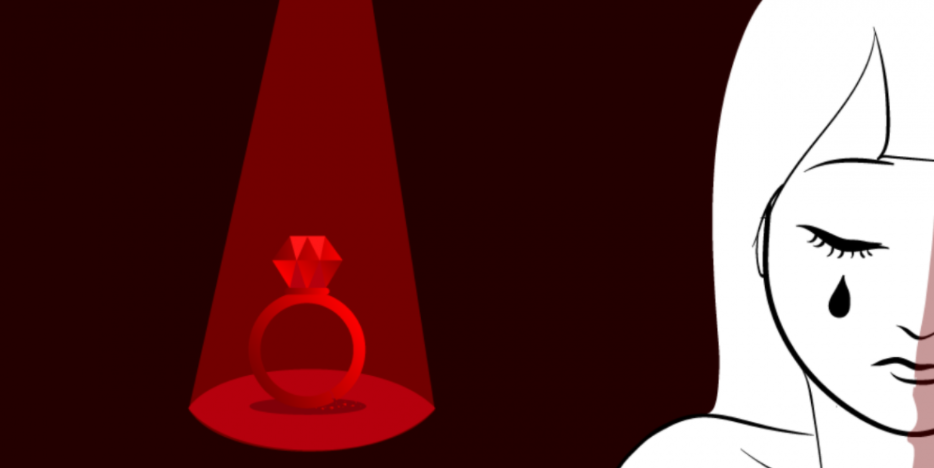
- While we have dedicated legislation for Dalits’ protection, such as the Scheduled Castes and Scheduled Tribes (Prevention of Atrocities) Act, 1989, and constitutionally mandated reservations for Dalits’ representation, we cannot mitigate systemic caste and gender violence unless these laws are properly implemented. It is critical that marginalized voices are heard in local panchayats, the police, the judiciary, and state administrations. The importance of caste identities in gender crimes will only find a place in public debate when Dalits are effectively represented in the public realm.It is no secret that the number of crimes committed against women in the country has been steadily increasing over the years, particularly among women from scheduled castes (SCs) and scheduled tribes (STs) (Crime in India Volume I, NCRB 2019). Women’s bodies and sexualities are burdened with a sense of honor and shame, which becomes the catalyst for violence against them. This further condemns the Dalit woman, who is the society’s most vulnerable and voiceless component, to an inescapable fate of violence at the hands of higher caste males. From kidnapping to murder to sexual abuse and rape, ruling castes exercise caste hegemony against Dalits in society with the help of governmental immunity. In situations like the Unnao poisoning, we focus on the details of the evidence to reconstruct timeframes, reasons, and the scene of the crime to guarantee that the accused is found guilty beyond a reasonable doubt. The state and society make unequivocal requests to clear society’s collective conscience and speed up the justice process. However, the communal guilt of establishing dominant caste privilege is never discussed. The accused’s aim is dissected to the nth degree, yet his chutzpah is never called into doubt. Because the patriarchal and caste structures are so entrenched, no Dalit woman ever has a fair chance to live or die.The dilemma of the hour, therefore, is what we, as affluent folks who decry the judicial system’s insufficiency, make of such heinous acts. We have been emphasizing the need for more inclusive laws rather than harsher punishments against sexual violence for decades, especially since the Nirbhaya rape tragedy. We want gender-neutral laws, the inclusion of marital rape, and the recognition of rape as a kind of communal violence. We also call attention to the legislators’ and legislation’ paternalistic and moralistic attitudes. We even acknowledge the link between gendered violence and caste. But, in the Indian context, we don’t go so far as to say that caste includes gender.A person’s caste is determined even before they are born, and there is no way to deviate from the norm. Genders who depart from heteronormative impositions, on the other hand, have managed to carve out a niche for themselves through their continual fights. Because of the ambivalence toward caste and gender issues, Dalit women and Dalit gay people must be at the forefront of our law reform discussions. In order for inclusive justice to begin, we must speak about the violent caste system in the same breath as we speak of patriarchy’s violent structure.
Perspective Of The Indian Judiciary

- Despite numerous attempts and modifications, law commission recommendations, and new legislation, one of the most humiliating and heartbreaking acts linked to a woman’s purity is not an offence in India if done within the confines of the marriage. The ideologies that see women as a man’s property after marriage are mostly to blame for this anomaly. When the laws are examined, the disparity is immediately apparent. The crime of rape is defined in Section 375 of the Indian Penal Code, and it criminalizes any form of the sexual act committed on a woman without her will or consent, with consent becoming irrelevant when the woman is under the age of 18. What’s strange about the provision is the exception clause attached to it, which states that “sexual intercourse or sexual acts by a man with his own wife, the wife not being under the age of fifteen years, is not rape.” The rapist shall be punished under Section 376 of the IPC, which specifies that the rapist should be sentenced to life imprisonment for a term of not less than 7 years but not more than life and that he or she may also be responsible for a fine. The Criminal Law Amendment Act of 2013, which amended Sections 375 and 376, resolved a lacuna that previously existed in Section 376, which punished a husband committing rape on his wife only if she was under the age of 12 years with imprisonment up to 2 years and a fine, which firstly created two age groups and secondly made the offence of rape, when committed on a wife under the age of 12 years, a milder offence, These laws can be said to be in violation of women’s basic human rights, as well as Article 14 (due to the distinction between marriage and the fact that rape committed on a married woman by her husband is not considered a crime) and Article 21 of the Indian Constitution. In India, marital rape exists in de facto but not in de jure forms; legislatures almost everywhere in the world have considered and passed laws punishing marital rape; in other places, the judiciary has evolved the concept and made it punishable; however, the Indian judiciary appears to be working backwards in this regard. The Supreme Court stated in Bodhisattwa Gautam v. Subhra Chakraborty that rape is a crime against basic human rights and a violation of the victim’s most cherished fundamental right, namely the right to life enshrined in Article 21 of the Constitution, but that it does not recognize marital rape as a crime.”The husband cannot be guilty of a rape perpetrated by himself upon his lawful wife, because by their joint married consent and contract, the wife hath given herself in kind unto the husband, which she cannot retract,” wrote Sir Hale, C.J. in England in the 17th century. This gave rise to the belief that the husband has a right to sexual access to his wife after the marriage, even if she does not consent. There have been several laws enacted to protect women from maltreatment, such as the Protection of Women from Domestic Violence Act of 2005. However, while these Acts recognize and attempt to redress the issue of physical violence against women, no such provision exists for sexual violence and abuse, and the law does not provide protection to them.
International Attitude Towards Acts Like This - India’s Role In It
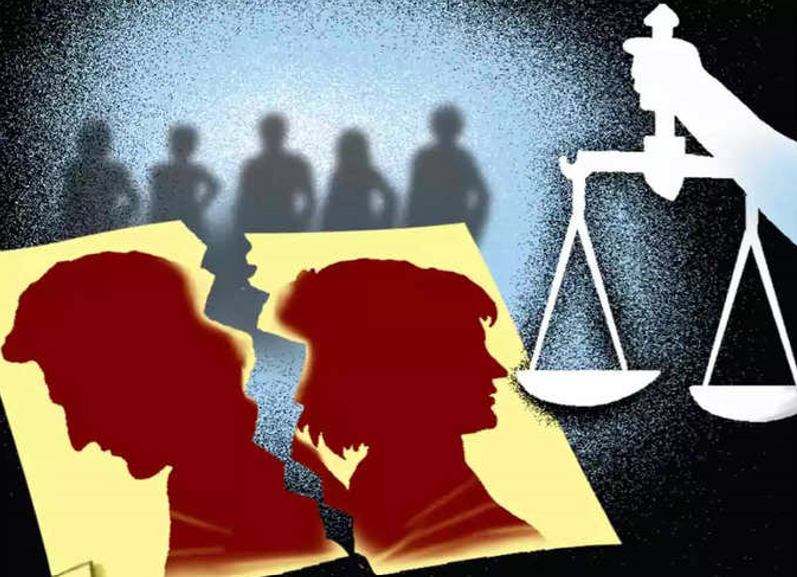
- It has been determined that Indian laws have failed to give adequate protection to women in the same way that they did previously. Women are still viewed as the property of their husbands, who have complete rights to exploit them with no recourse. Though a husband’s violent and non-consensual act of intercourse may empower a wife to file a criminal assault charge, our penal laws do not include the principle of culpability for marital rape. This appears to be a violation of Indian Constitution Articles 14 and 21. The Indian legal system is concerned about the non-criminalization of marital rape. The judiciary should take steps to safeguard women in order to protect them. Married women should be treated with respect and should not be subjected to sexual violence or assault. As a result, this section takes a very restricted view of sexual assault, and there is currently no legal provision that protects married women.
Moral And Ethical Quandary
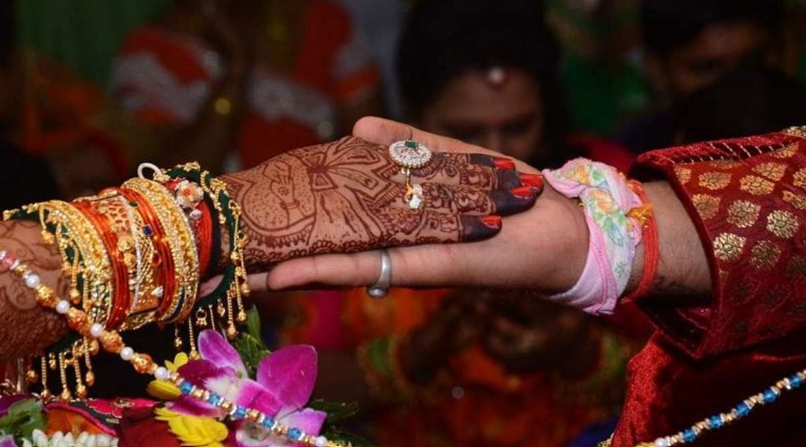
Rape is a sort of sexual assault in which a person is subjected to forced sexual intercourse without his or her permission. Physical force, compulsion, or abuse may be used against a person who is incapable of giving valid consent or is under the legal age of consent. Rape incidents are categorized into a number of categories, which may define the perpetrator’s relationship with the victim as well as the circumstances of the sexual attack. These categories may include marital rape. Marital rape refers to a circumstance in which a legally married couple’s husband coerces his wife into engaging in sexual acts that unintentionally result in sexual abuse. A woman has total discretion over whether she agrees to her husband’s request for sexual intercourse or whether she wants to engage in it herself.
If a husband does not stop instead of saying no, it is rape because she did not consent. She declined. That’s all there is to it. The government focuses on a spouse’s right to control the sexuality of the other spouse, which stymies the entire consent discussion. It conflates sexual assault with honor, diverting attention away from the fact that it is a violent violation of consent. In response to a Public Interest Litigation filed by an NGO named Men Welfare Trust, Acting Chief Justice Gita Mittal and C Hari Shankar of the Delhi High Court remarked, “Marriage does not mean that the woman is always ready, willing, and consenting [for sex].” The man will have to show that she gave her consent.” Articles 14 and 21 of the Constitution are violated by Exception 2 to Section 375 of the IPC.
Conclusion
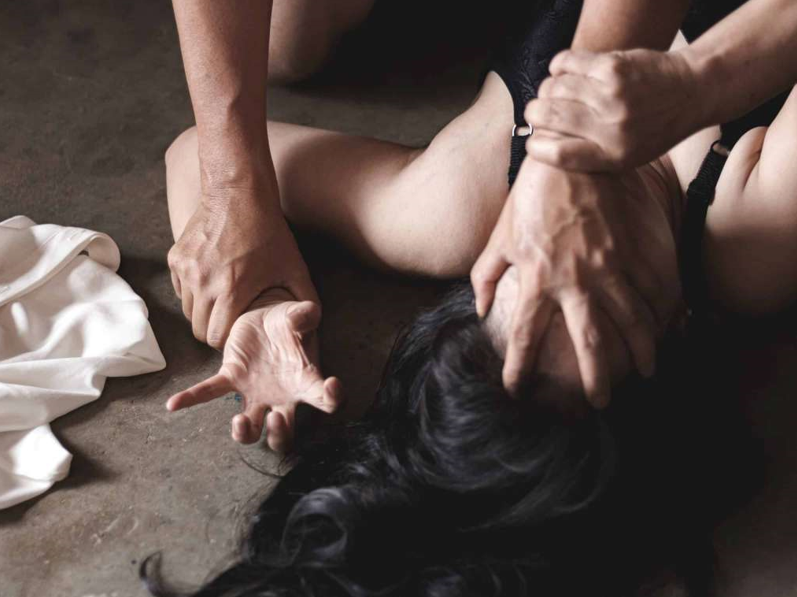
- In India, rape in the bedroom is not fully prohibited. It is unquestionably a genuine form of mistreatment of women that merits the attention of the authorities. Women who have been raped by their spouses are more vulnerable to a variety of attacks and frequently face long-term physical and emotional problems. In this case, marital rape is far more terrifying for a woman because she must remain with her perpetrator on a regular basis. Because the consequences of marital rape are so severe, criminalizing the crime of marital rape is clearly necessary. Positive legal change for women is occurring in India, but additional steps are required to achieve both legal and social reform, which would result in the criminalization of marital rape and a shift in attitudes toward women in marriage. The Protection of Women from Domestic Violence Act contains numerous flaws, as it does not expressly prohibit marital rape. On the plus side, the legalization of a specific law against domestic violence has paved the path for a law criminalizing marital rape. This definitely reflects a shift in state ideology, which previously valued non-interference in familial circles.
Top 13 Facts About Marital Rape
It is the act of having sexual relations with one’s spouse without their consent.
In our society, marriage is usually regarded as a legal license to commit marital rape.
In the form of domestic violence and sexual abuse, it is considered a horrible crime.
A rape committed within abusive relationships is known as marital rape.
The rise in marital rape statistics is attributable to a reluctance to acknowledge marital violence as a crime, as well as misguided traditional conceptions of marriage, religious doctrinal manipulation, and cultural expectations about male and female sexuality. Water, diamonds, and ladies, according to Indian tradition, are the three most pure elements.
This demonstrates the purity of a woman’s mind and body. This purity is being shattered and encroached upon by marital rape.
Rape was once characterized as a crime committed on a man’s property. This demonstrates how a woman’s identity is inextricably linked to her husband’s.
There appears to be an identity problem and a sense of status anxiety here.
Due to dominant patriarchal ideas, the victim’s pitiful mental and physical condition was not taken into account.
The marital rape was acknowledged due to a misunderstanding about a wife’s legal subjection to her husband.
According to data from the World Bank, India is one of the 36 countries in the world where marital rape is legal.
Many campaigners and ordinary people have called for the criminalization of marital rape. But it was all in vain.
The husband’s power over the wife’s body has been recognized by society as equitable and fair. The time has come to think beyond the box.
Some FAQs Or Also Ask Question
What is marital rape?
Marital rape is not an offense in India. Enactments in regards to marital rape in India are either non-existent or esoteric and dependant on the understanding by Courts. Section 375, the provision of rape in the Indian Penal Code (IPC), mentions as its exception clause- “Sexual intercourse by man with his own wife, the wife not being under 15 years of age, is not rape.” As per section 376 of IPC, which provides punishment for rape, the rapist ought to be rebuffed with detainment of either portrayal for a term which might not be under 7 years but rather which may stretch out to life or for a term reaching out up to 10 years and should likewise be at risk to fine unless the lady raped is his own particular spouse, and is not under 12 years old, in which case, he might be rebuffed with detainment of either depiction for a term which may reach out to 2 years with fine or with both.
What is the marital rape status in India?
Domestic violence in India is an entrenched problem, and it has only been exacerbated in recent years. According to the National Crime Records Bureau’s (NCRB) ‘Crime in India’ 2019 report, about 70% of women in India are victims of domestic violence. One such manifestation of this domestic violence is Marital rape. Marital rape, the act of forcing your spouse into having sex without proper consent, is an unjust yet not uncommon way to degrade and disempower women. Today, Marital rape has been impeached in more than 100 countries but, unfortunately, India is one of the only 36 countries where marital rape is still not criminalized. Even though many legal amendments have been done in criminal law for the protection of the women, the non-criminalization of marital rape in India undermines the dignity and human rights of women.



